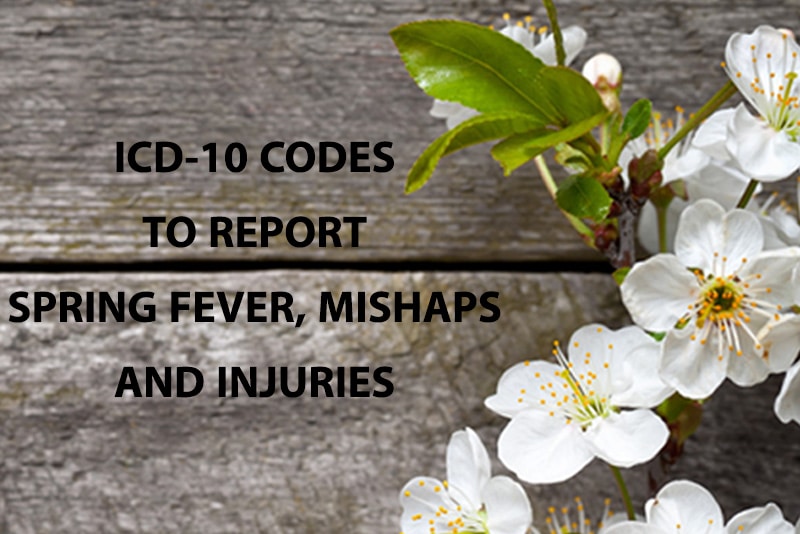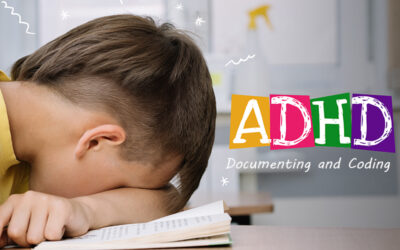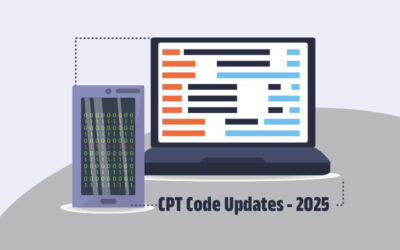Seasonal changes can affect a person’s mood and behavior. Spring fever is term used to describe the physical and psychological signs and effects associated with the arrival of longer sunny days. Spring fever or spring disease is defined as an amorphous disease that involves symptoms such as flushed face, increased heart rate, appetite loss, poor wound healing, joint swelling, restlessness, laziness, amorousness and daydreaming. Such mood disorders are often treated by primary care providers (PCP), clinical psychologists or psychiatrists. Practices treating SADs can rely on professional medical billing services to accurately report these services on claims.
Many studies prove that spring brings changes in hormones. When melatonin production eases up this month, depression also increases. According to Scientific American, “clearly, there are marked correlations between moods, behavior and the lengthening days of spring, but the precise cause for our renewed energy remains elusive.”
Any such seasonal affective disorders (SAD) and mishaps as well as various springtime ailments and injuries can be reported using ICD-10-CM codes.
Spring Sport Injuries
Along with many athletic opportunities, spring also come with more common injuries. Many get involved in sports such as baseball, softball, tennis, soccer ball and volleyball during this season, resulting in overuse injuries. These sports have particular movements that are extremely repetitive in nature and the key symptom of overuse is a weakening of the joint. Strains and sprains, concussions, bone bruise and contusions and back injuries are also common with sports. Orthopedic physicians recommend getting sufficient rest between games to prevent such injuries. Kids and adults can get injured with roller skates, roller blades, or roller shoes. There are also possibilities to occur from bicycle rides.
ICD-10 codes to report spring sports injuries –
- W21.02 Struck by soccer ball
- W21.03 Struck by baseball
- W21.04 Struck by golf ball
- W21.06 Struck by volleyball
- W21.11 Struck by baseball bat
- W21.13 Struck by golf club
- V00.01 Pedestrian on foot injured in collision with roller-skater
- V00.11 In-line roller-skate accident
- V00.112 In-line roller-skater colliding with stationary object
- V00.15 Heelies accident
- V00.151 Fall from heelies
- V00.152 Heelies colliding with stationary object
- W37.0 Explosion of bicycle tire
- V10 Pedal cycle rider injured in collision with pedestrian or animal
- V14 Pedal cycle rider injured in collision with heavy transport vehicle or bus
- S01.81XA Laceration without foreign body of other part of head, initial encounter
Spring Yard Work Injuries
During spring, many consider doing exterior works like gardening on their home. Accidents may happen, when they rush, making gardening a dangerous activity. While gardening, people may also be affected by allergic reactions such as pollen and sting-bearing pollinators. There are also possibilities for attacks from snakes in the dirt, under bushes and around hedges. Some common yard work injuries in spring are slips or falls, strains, slashes, cuts and burns or get struck by lightning.
- Y93.H2 Activity, gardening and landscaping
- Y92.007 Garden or yard of unspecified non-institutional (private) residence as the place of occurrence of the external cause
- T63.441A Toxic effect of venom of bees, accidental (unintentional), initial encounter
- J30.1 Allergic rhinitis due to pollen
- J30.2 Other seasonal allergic rhinitis
- W60.XXXA Contact with non-venomous plant thorns and spines and sharp leaves, initial encounter
- W29.3 Contact with powered garden and outdoor hand tools and machinery and
- Z89.419 Acquired absence of unspecified great toe
- W59.11XA Bitten by non-venomous snake, initial encounter
- T63.001A Toxic effect of unspecified snake venom, accidental (unintentional), initial encounter
- T75.01XA Shock due to being struck by lightning, initial encounter
Other common spring time conditions that family practitioners treat include gardening problems such as gardeners’ back or low back pain caused by digging and lifting heavy objects, weeder’s wrist or wrist pain that occur due to over-zealous weeding or overuse of the garden shears and pruner’s neck or neck and shoulder pain caused by trimming those high branches on hedges and trees.
- M54.5 Low back pain
- M25.51 Pain in shoulder
- M25.511 Pain in right shoulder
- M25.512 Pain in left shoulder
- M25.519 Pain in unspecified shoulder
- M25.53 Pain in wrist
- M25.531 Pain in right wrist
- M25.532 Pain in left wrist
Spring Farm Accidents
As the spring has arrived, many farmers will be busy in fields and tending livestock. Farmers have to using heavy machinery in the fields, increasing the risks for injury. Codes to report injuries that occur when working in the field are:
- Y92.7 Farm as the place of occurrence
- Y92.71 Barn as the place of occurrence of the external cause
- Y92.72 Chicken coop as the place of occurrence of the external cause
- Y92.73 Farm field as the place of occurrence of the external cause
- Y92.74 Orchard as the place of occurrence of the external cause
- Y92.79 Other farm location as the place of occurrence of the external cause
- W30.9 Contact with unspecified agricultural machinery
Livestock-related trauma is also common during this season. Most injuries that occur while working cattle include: being kicked, run over, stepped on, pinned against the fence, attacked by mama cow and more. Examples of codes to report such injuries include:
- W55.21XA Bitten by a cow, initial encounter
- W55.22 Struck by cow
- W55.31XA Bitten by other hoof stock, initial encounter
- W55.41XA Bitten by pig, initial encounter
- W61.33XA Pecked by chicken, initial encounter
- W61.62XD Struck by duck, subsequent encounter
Hope for Spring
In certain northern states, arrival of spring may be delayed due to climate changes. Hope for spring and lack of sun and not enough mood-lifting vitamin D can lead to seasonal affective disorders (SAD). There are codes to report such disorders –
- F32.9 Major depressive disorder, single episode, unspecified
- E55.9 Vitamin D deficiency, unspecified
Long winter can cause too much cold and snow that can cause cabin fever. Related codes:
- R45.1 Restlessness and agitation
- R45.2 Unhappiness
- X16.XXXA Contact with hot heating appliances, radiators and pipes, initial encounter
Accurate reimbursement for treatment of spring fever mishaps requires clear documentation. Experienced medical coding companies can support physicians by ensuring correct code submission in claims.




